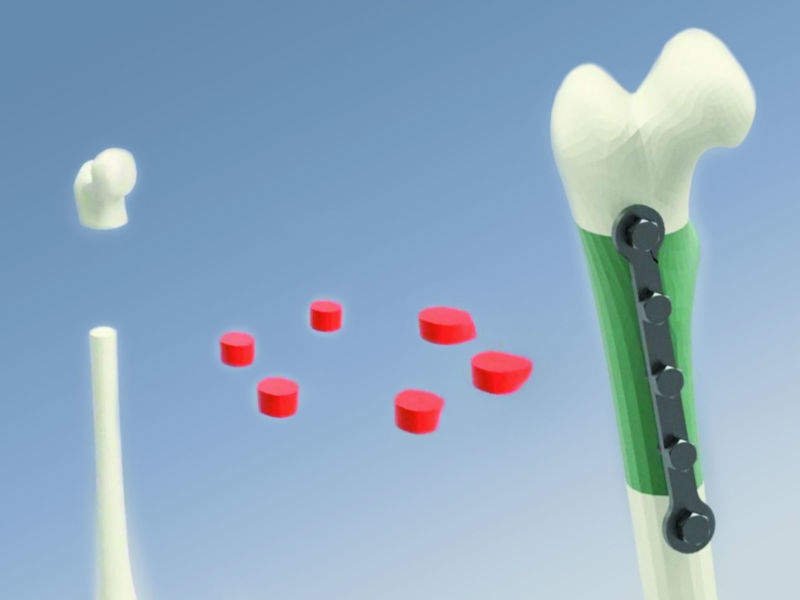
Scientists from the New York Stem Cell Foundation (NYSCF) Research Institute have developed a new bone engineering technique called segmental additive tissue engineering (SATE), which enables the combination of segments of bone engineered from stem cells to create large-scale, personalised grafts.
A paper describing the technique has been published online in Scientific Reports.
NYSCF CEO Susan Solomon said: “We are hopeful that SATE will one day be able to improve the lives of the millions of people suffering from bone injury due to trauma, cancer, osteoporosis, osteonecrosis, and other devastating conditions.
“Our goal is to help these patients return to normal life, and by leveraging the power of regenerative medicine, SATE brings us one step closer to reaching that goal.”
Leader of the study Dr Giuseppe de Peppo added: “Bone defects obtained in disease or injury are a growing issue, and having effective treatment options in place for personalised relief, no matter the severity of a patient’s condition, is of critical importance.”
Current bone replacement treatments often spark immune rejection, do not form connective tissue or the vasculature needed for functional bone, and can be quickly outgrown by paediatric patients. Bone grafts generated from patient stem cells have the potential to overcome such limitations but it is said to be difficult to bioengineer these grafts in the exact size and shape needed to treat large defects.
How well do you really know your competitors?
Access the most comprehensive Company Profiles on the market, powered by GlobalData. Save hours of research. Gain competitive edge.

Thank you!
Your download email will arrive shortly
Not ready to buy yet? Download a free sample
We are confident about the unique quality of our Company Profiles. However, we want you to make the most beneficial decision for your business, so we offer a free sample that you can download by submitting the below form
By GlobalDataNYSCF researcher and first author of the study Dr Martina Sladkova said: “As the size of the defect that needs to be replaced gets larger, it becomes harder to reproducibly create a graft that can move from the lab to the clinic.
“We wanted to see if we could instead engineer smaller segments of bone individually and then combine them to create a graft that overcomes the current limitations in the size and shape of a bone that can be grown in the lab.”
The researchers say that SATE is standardised, versatile and easy to implement, and are confident in its potential to enable bone graft engineering that will help to improve the quality of life of paediatric and adult patients suffering from segmental bone defects.




